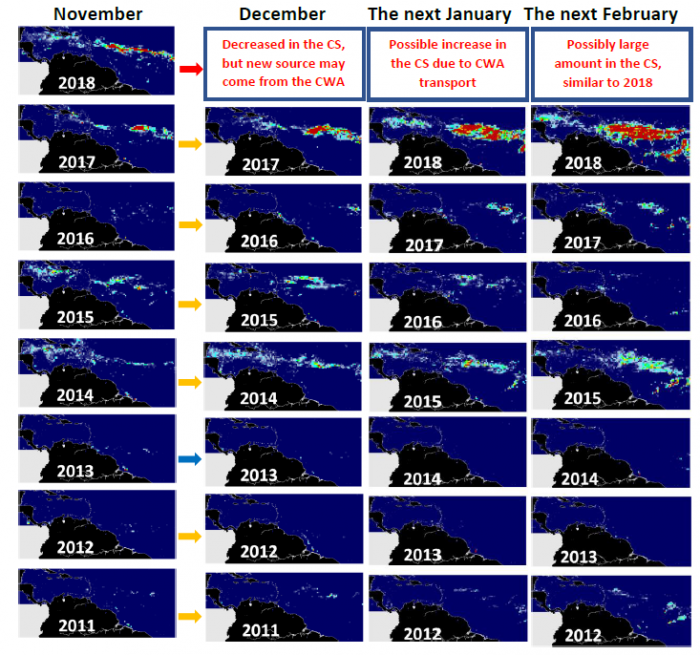So far the Caribbean Sea (CS) has experienced a record-high Sargassum bloom ever since January 2018. The maps below show Sargassum abundance, with warm colors representing high abundance. In November 2018, the bloom intensity continued to decrease in the CS, but still comparable to the bloom extent in November 2015. There is also significant amount of Sargassum abundance in the Central West Atlantic (CWA), which is similar to the situation in November 2017. Based on the these observations, we predict that the bloom intensity in the northern CS will continue to decrease in December, while more Sargassum may be transported from the CWA to the eastern CS in the following months. Most importantly, the large amount of Sargassum in the CWA represents an alarming signal for 2019, when the CS may experience large amount of Sargassum as early as January (similar to 2018).
Wang, M., and C. Hu (2017), Predicting Sargassum blooms in the Caribbean Sea from MODIS observations, Geophys. Res. Lett., 44, 3265–3273, doi:10.1002/ 2017GL072932.

“The bloom intensity in the Caribbean Sea has continued to decrease, but the amount of Sargassum in the central West Atlantic is comparable to or even higher than the historical record. This is alarming – it indicates that by January – February the eastern Caribbean may experience another wave of Sargassum inundation. We’ll keep a close eye in December to see whether this trend may continue.” – Chuanmin Hu (USF)
Disclaimer: The information bulletin is meant to provide a general outlook of current bloom condition and future bloom probability for the Caribbean Sea. By no means should it be used for commercial purpose, or used for predicting bloom conditions for a specific location or beach. The authors of this bulletin, as well as USF and NASA, take no responsibility for improper use or interpretation of the bulletin.



